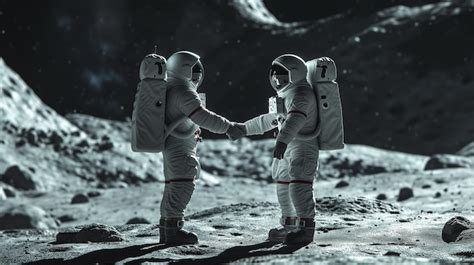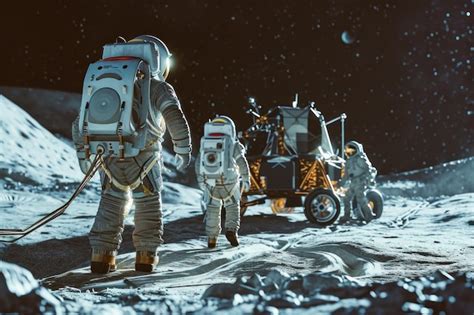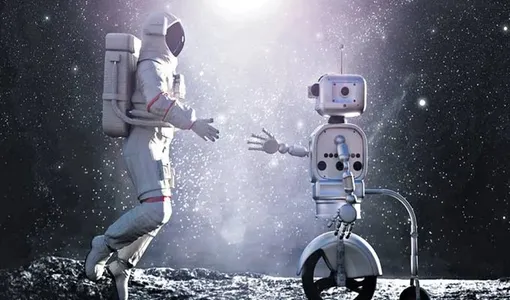Space exploration has long been a frontier of human curiosity, pushing the boundaries of technology and innovation. At the heart of this journey lies the incredible advancements in robotics, which have revolutionized how we explore the cosmos. From early robotic missions to cutting-edge autonomous systems, robotics has played a pivotal role in enabling us to reach new heights and uncover the mysteries of the universe. This article delves into the historical milestones, current trends, and future prospects of space robotics, highlighting the key innovations and technologies that are transforming both our understanding of space and the technological landscape on Earth.
Explore this topic thoroughly with uzocn.com
1. Introduction to Space Exploration and Robotics
Space exploration stands as a beacon of human ingenuity and our unwavering desire to expand our understanding of the universe. As we embark on journeys into the vast unknown, the demand for cutting-edge tools and technologies becomes ever more critical. Robotics, in particular, has emerged as a fundamental pillar of modern space exploration, empowering us to undertake missions that would be impossible or too hazardous for human crews.
Our exploration of space began with the deployment of simple robotic probes to gather data from distant planets. However, space robotics has undergone a dramatic evolution over the years. These machines have not only expanded our reach into the cosmos but have also yielded vital information about conditions and the possibility of life beyond Earth. Today, robots are engineered to operate autonomously, tackle intricate tasks, and even make decisions based on real-time data, continuously pushing the limits of our spacefaring capabilities.
Robotics in space exploration is more than just about venturing into the unknown. It’s about deepening our knowledge of the cosmos and using these technological breakthroughs to enhance life on Earth. Looking ahead, the combined power of robotics and space exploration holds the potential to unlock unprecedented possibilities, fueling innovation and igniting the passion for exploration in future generations of scientists and adventurers.

2. Historical Milestones in Space Robotics
The history of space robotics is punctuated by remarkable achievements that have greatly expanded our capacity to explore the universe. This journey began in the 1960s with the launch of pioneering robotic spacecraft such as the Soviet Union’s Luna 9, which became the first vehicle to successfully land on the Moon and transmit images back to Earth.
The decades that followed witnessed a relentless push into the unknown by robotic explorers. NASA’s Viking program in the 1970s marked a historic milestone with the successful landing of probes on Mars, delivering the first close-up views of its surface. The 1990s saw further advancements with the deployment of the Sojourner rover as part of the Mars Pathfinder mission, proving the practicality of robotic exploration on another planet.
The 21st century has witnessed even more advanced robotic missions. Notably, the Mars rovers Spirit, Opportunity, and Curiosity have traversed vast distances on the Martian surface, conducting scientific experiments and transmitting invaluable data. These milestones demonstrate the evolution of space robotics from simple probes to sophisticated autonomous systems, each step propelling us closer to the exploration of deeper space.

3. Current Trends in Space Robotics
Current trends in space robotics are characterized by increasing autonomy, enhanced mobility, and advanced AI integration. Modern space robots are designed to perform complex tasks with minimal human intervention, allowing them to operate effectively in the harsh and unpredictable environments of space. Autonomous systems are becoming more prevalent, enabling robots to make real-time decisions, navigate challenging terrains, and adapt to unforeseen circumstances.
Another significant trend is the development of more versatile robotic platforms, such as modular robots that can be reconfigured for different missions or tasks. This adaptability is crucial for long-duration missions, where flexibility and resource efficiency are paramount.
Furthermore, AI and machine learning are playing an increasingly central role in space robotics, enabling robots to analyze vast amounts of data and learn from their experiences to improve performance over time. These advancements are driving the next generation of robotic explorers, which will push the boundaries of what is possible in space exploration, from deep space missions to planetary colonization.

4. Notable Robotic Missions in Space Exploration
Robotic missions have profoundly shaped our understanding of space, each leaving behind a legacy of groundbreaking discoveries and technological innovation. Among the most celebrated are the Voyager missions, launched by NASA in 1977. Voyager 1 and 2 delivered unprecedented close-up images of the outer planets, while Voyager 1, the most distant human-made object, continues to send data back from interstellar space.
Robotic missions have made significant contributions to our understanding of Mars. The twin rovers Spirit and Opportunity, launched in 2003, far surpassed their planned lifespans, traversing the Martian landscape for years and uncovering evidence of past water presence. Curiosity, which landed on Mars in 2012, continues to investigate the planet’s geology and climate, searching for signs of conditions that may have once supported life.
In 2014, the European Space Agency’s Rosetta mission achieved a significant milestone by successfully orbiting and landing a probe on a comet. This mission yielded unparalleled data about the composition of comets, providing valuable insights into the early solar system.
These missions underscore the vital importance of robotics in broadening our understanding of the cosmos. They provide unique perspectives on distant worlds, inaccessible to humans, and lay the groundwork for future human exploration.
5. Advancements in Autonomous Space Robots
The emergence of autonomous space robots has revolutionized space exploration, ushering in a new era of efficiency, versatility, and capability in tackling complex challenges. These robots are equipped with advanced algorithms and sensors, allowing them to function independently, making decisions and adapting to unfamiliar environments without direct human control. This autonomy is essential for missions to distant planets or asteroids, where communication delays render real-time human intervention infeasible.
One of the most significant advancements is the development of autonomous navigation systems. These systems allow robots to move through unfamiliar environments, navigate around obstacles, and choose the best routes, all while collecting and interpreting data. This is exemplified by the Mars rovers, especially Curiosity and the more recent Perseverance, which autonomously explore the Martian landscape, collecting samples by drilling, and conducting scientific experiments.
A significant improvement lies in utilizing AI and machine learning to refine the decision-making capabilities of these robots. Through learning from their surroundings and past missions, autonomous robots can elevate their performance over time, effectively adapting to new challenges and optimizing task execution.
These advancements are not only enhancing our capacity for solar system exploration but also laying the groundwork for future missions. These future missions may involve the creation of habitable environments, resource extraction, and even the collaboration of humans and robots on other planets.
6. The Role of AI in Space Robotics
Artificial Intelligence (AI) is transforming space robotics, empowering robots to perform intricate tasks autonomously. Space exploration presents unique challenges, such as unpredictable environments and substantial communication delays. AI addresses these challenges by enabling robots to make real-time decisions and adapt to their surroundings without requiring constant input from Earth.
AI is used in various aspects of space robotics, from navigation and obstacle avoidance to scientific data analysis. For instance, the AI systems onboard the Mars rovers allow them to identify and prioritize geological features of interest, optimizing the scientific return of their missions. AI also plays a critical role in the autonomy of spacecraft, enabling them to execute intricate maneuvers, such as landing on a moving comet or docking with the International Space Station.
Machine learning, a subset of AI, further enhances robotic capabilities by allowing systems to learn from past experiences and improve their performance over time. As AI continues to evolve, its integration into space robotics will lead to even more sophisticated and self-reliant explorers, capable of undertaking missions that were once thought impossible, and pushing the boundaries of human knowledge and exploration.
7. Key Technologies Driving Space Robotics
Space robotics is propelled forward by key technologies that are essential for exploration and scientific advancement. One fundamental technology is advanced sensing and imaging systems, which encompass high-resolution cameras, LIDAR, and diverse spectrometers. These sensors allow robots to acquire comprehensive data about their surroundings, analyze surfaces, and conduct experiments from a distance.
Robotic actuators and manipulators, another crucial technology, enable robots to execute precise movements and handle diverse tasks. These components are vital for operations such as sample collection, tool usage, and structural repairs. Designed to operate reliably in the extreme conditions of space, modern actuators boast enhanced dexterity and strength.
Autonomous navigation systems are crucial for robot operation. Utilizing AI algorithms, these systems analyze data from sensors, allowing robots to navigate challenging terrains, evade obstacles, and carry out pre-programmed tasks autonomously. Moreover, progress in communication technologies, including high-bandwidth data links and deep-space communication networks, facilitates the transmission of substantial data volumes from robots to Earth, ensuring a consistent stream of information.
These technologies work in concert to empower space robots, paving the way for more ambitious missions and generating invaluable data that deepens our comprehension of the cosmos.
8. Challenges and Solutions in Space Robotics
Space robotics faces a number of significant hurdles, each demanding innovative solutions for successful missions. One primary obstacle is the unforgiving and unpredictable environment of space. Extreme temperatures, radiation, and micrometeoroid impacts pose a constant threat to robotic systems. Engineers are working to overcome this challenge by developing robust shielding and thermal control systems, ensuring that robots can withstand these conditions and continue to function effectively.
Autonomous navigation and task execution present a significant challenge. Space robots must navigate uncharted territories, deftly avoiding obstacles, and executing complex tasks with exceptional precision. Advanced AI and machine learning algorithms empower these robots to learn from their surroundings and adapt dynamically. Enhanced sensors and imaging systems provide the crucial data for effective navigation and decision-making.
A significant challenge in operating spacecraft far from Earth is the communication delay. Signals sent from Earth take a considerable amount of time to reach distant missions, making real-time control and adjustments difficult. To overcome this obstacle, robotic spacecraft are outfitted with advanced onboard computers. These systems enable robots to make decisions and perform tasks independently, without needing constant instruction from Earth.
Developing and maintaining robotic systems for space missions is a costly and complex endeavor. However, collaborative international efforts and partnerships between space agencies and private companies are driving innovation and reducing costs. This collaboration is making advanced robotics more accessible and effective for future missions.
9. Future Prospects of Robotics in Space Exploration
The future of robotics in space exploration holds exciting prospects, promising to push the boundaries of what is achievable in our quest to understand the universe. One major development is the advancement of autonomous robots capable of performing complex tasks with minimal human intervention. These robots are expected to conduct in-depth exploration of distant planets, moons, and asteroids, potentially setting the stage for future human missions.
Robotics will play a crucial role in establishing permanent bases on the Moon and Mars. Advanced robotic systems could construct habitats, extract resources, and conduct experiments, laying the groundwork for human colonization. Innovations such as self-repairing robots and modular designs will enhance the durability and adaptability of these systems.
Additionally, the integration of AI will enable robots to perform real-time analysis and decision-making, significantly improving mission efficiency and outcomes. Collaborative efforts between international space agencies and private enterprises will drive these advancements, making space exploration more feasible and cost-effective. The continued evolution of space robotics will not only expand our exploration capabilities but also inspire new technological breakthroughs with applications far beyond space.
10. Impact of Space Robotics on Earth Technologies
Advances in space robotics have significantly influenced Earth-based technologies, fostering innovation across numerous industries. Many technologies initially conceived for space missions have been repurposed for terrestrial applications, resulting in advancements in fields like medicine, manufacturing, and communication. For instance, robotic systems originally designed for space exploration have informed the development of precise surgical robots, facilitating minimally invasive procedures and improving surgical outcomes.
Space exploration’s robust and adaptive robotics have played a key role in advancing manufacturing. These technologies have fueled the development of automated production lines and smart factories, leading to greater efficiency and precision. Moreover, innovations stemming from space robotics, including advanced sensors and imaging systems, have found their way into consumer electronics, enhancing the capabilities of smartphones and cameras.
Rigorous testing and development of space robotics have yielded significant advancements in materials science, leading to the creation of more durable and efficient materials for everyday applications. The innovations in space robotics continue to foster technological progress on Earth, showcasing the vast benefits of investing in space exploration technologies.
The field of space robotics has transformed space exploration, driving groundbreaking discoveries and expanding our capabilities beyond Earth. From early robotic missions to the latest autonomous systems, these advancements have not only enhanced our understanding of the universe but also spurred technological innovations on Earth. As we look to the future, continued progress in robotics and AI promises even more ambitious missions and deeper space exploration. The synergy between space robotics and technological development underscores the profound impact of these innovations, benefiting both our quest for knowledge and everyday life.
uzocn.com


